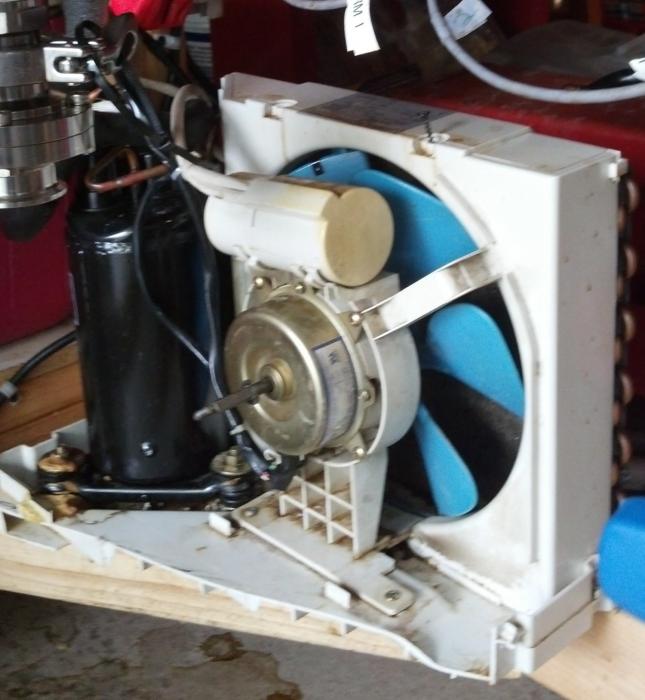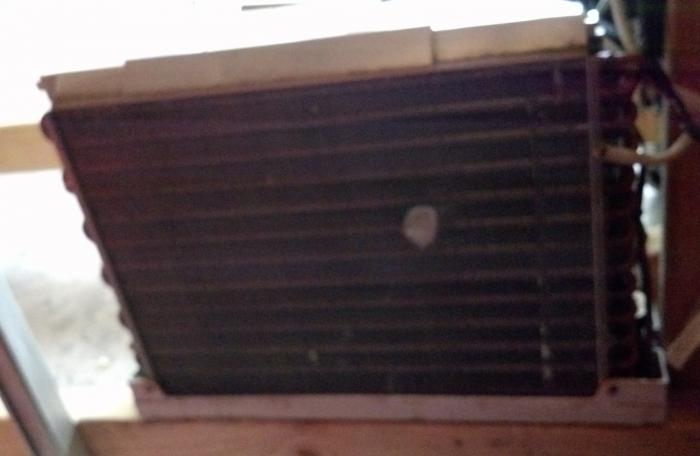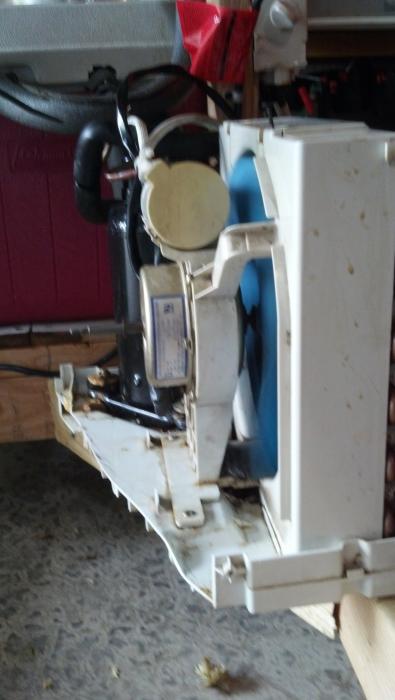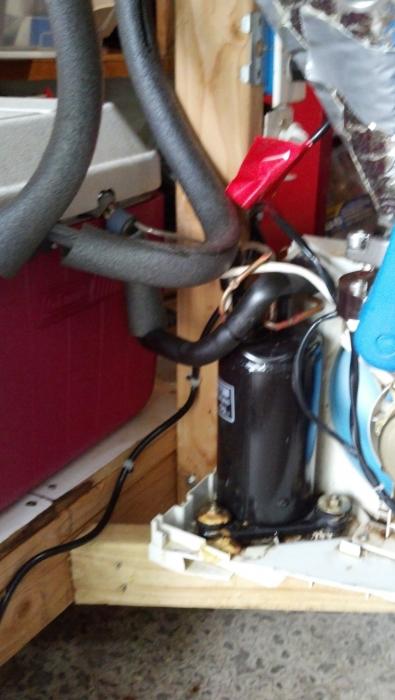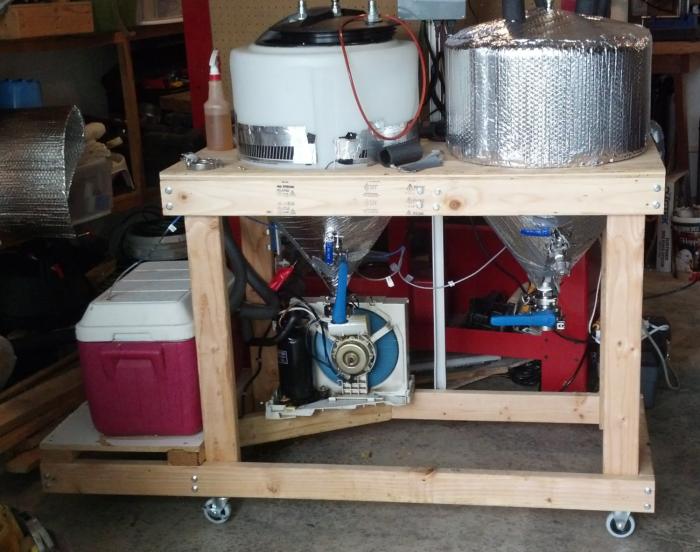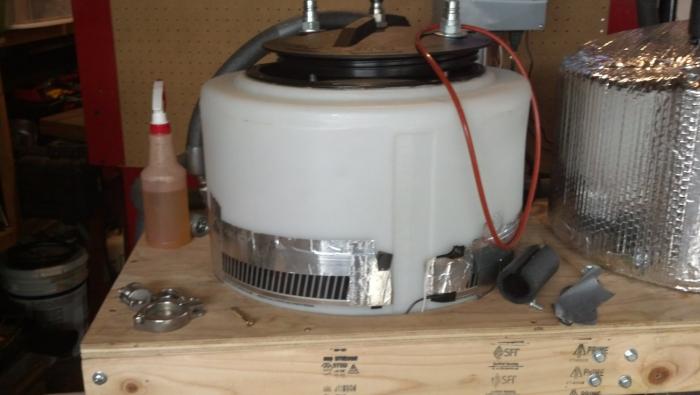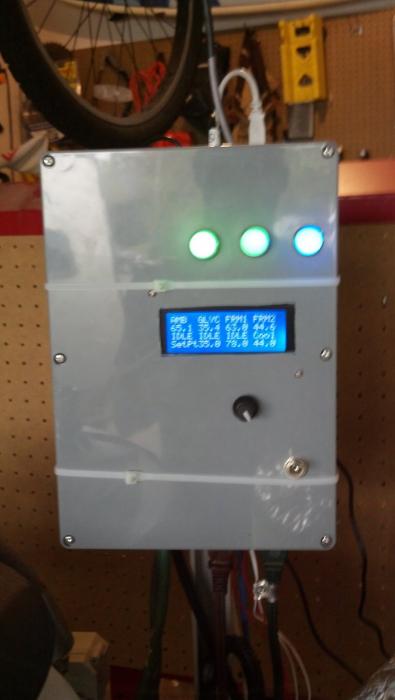Tonight I tackled the reservoir and the A/C unit. I didn't finish. I ran into some difficulty. I got to the point where I didn't know what to disassemble and what not to take apart.
It looks like the AC unit, if it were left to do its job of cooling a regular room, would have the front condenser assembly be the cold part, across which, there is air flow and it seems, a circular drum type fan unit. It seems that the drum unit could be removed since there is no air flow required of the condenser once it is submerged in coolant. The coils are also tinted blue.
It seems the rear side of the unit also has condenser coils, and the the traditional rotary fan blades cool this off, which probably "sucks" heat from the cold side, and requires the fan. It seems this fan and condenser assembly must remain relatively intact and mounted to the AC frame, which can then rest or bolt to the stand.
I haven't pulled apart the cold half of the condenser assembly yet, nor carved into the cooler to try and fit the cooling coils into the coolant reservoir... yet.
It seems this is a point of no return, and I want to get it right.
Are there any tips or suggestions for doing this from those who've been there and done that before?
My plan is to get the whole coolant reservoir setup and then do the plumbing last. I hope the cooler can hold the condenser and the pump as well..
TD
It looks like the AC unit, if it were left to do its job of cooling a regular room, would have the front condenser assembly be the cold part, across which, there is air flow and it seems, a circular drum type fan unit. It seems that the drum unit could be removed since there is no air flow required of the condenser once it is submerged in coolant. The coils are also tinted blue.
It seems the rear side of the unit also has condenser coils, and the the traditional rotary fan blades cool this off, which probably "sucks" heat from the cold side, and requires the fan. It seems this fan and condenser assembly must remain relatively intact and mounted to the AC frame, which can then rest or bolt to the stand.
I haven't pulled apart the cold half of the condenser assembly yet, nor carved into the cooler to try and fit the cooling coils into the coolant reservoir... yet.
It seems this is a point of no return, and I want to get it right.
Are there any tips or suggestions for doing this from those who've been there and done that before?
My plan is to get the whole coolant reservoir setup and then do the plumbing last. I hope the cooler can hold the condenser and the pump as well..
TD

















































![Craft A Brew - Safale S-04 Dry Yeast - Fermentis - English Ale Dry Yeast - For English and American Ales and Hard Apple Ciders - Ingredients for Home Brewing - Beer Making Supplies - [1 Pack]](https://m.media-amazon.com/images/I/41fVGNh6JfL._SL500_.jpg)








